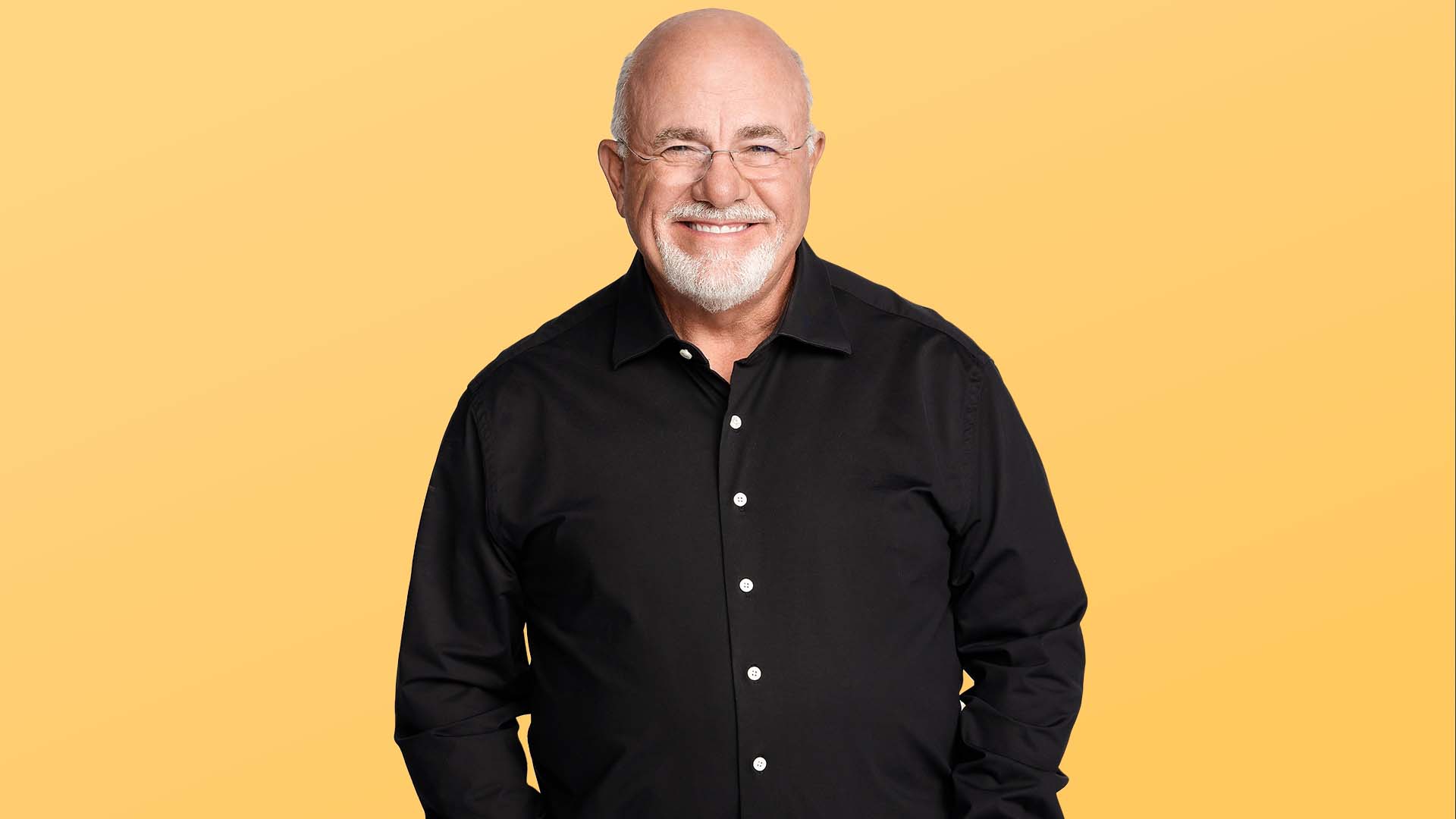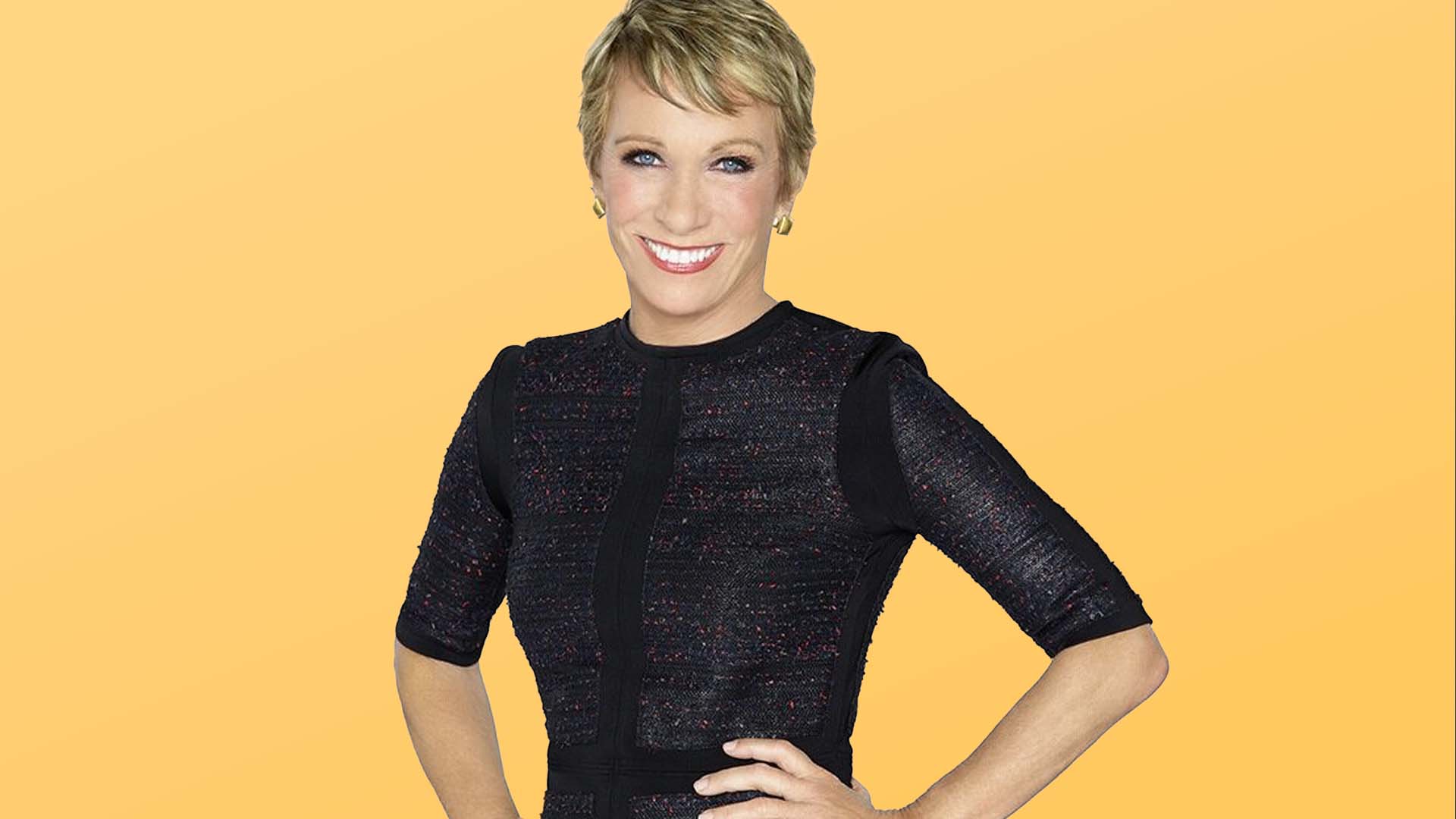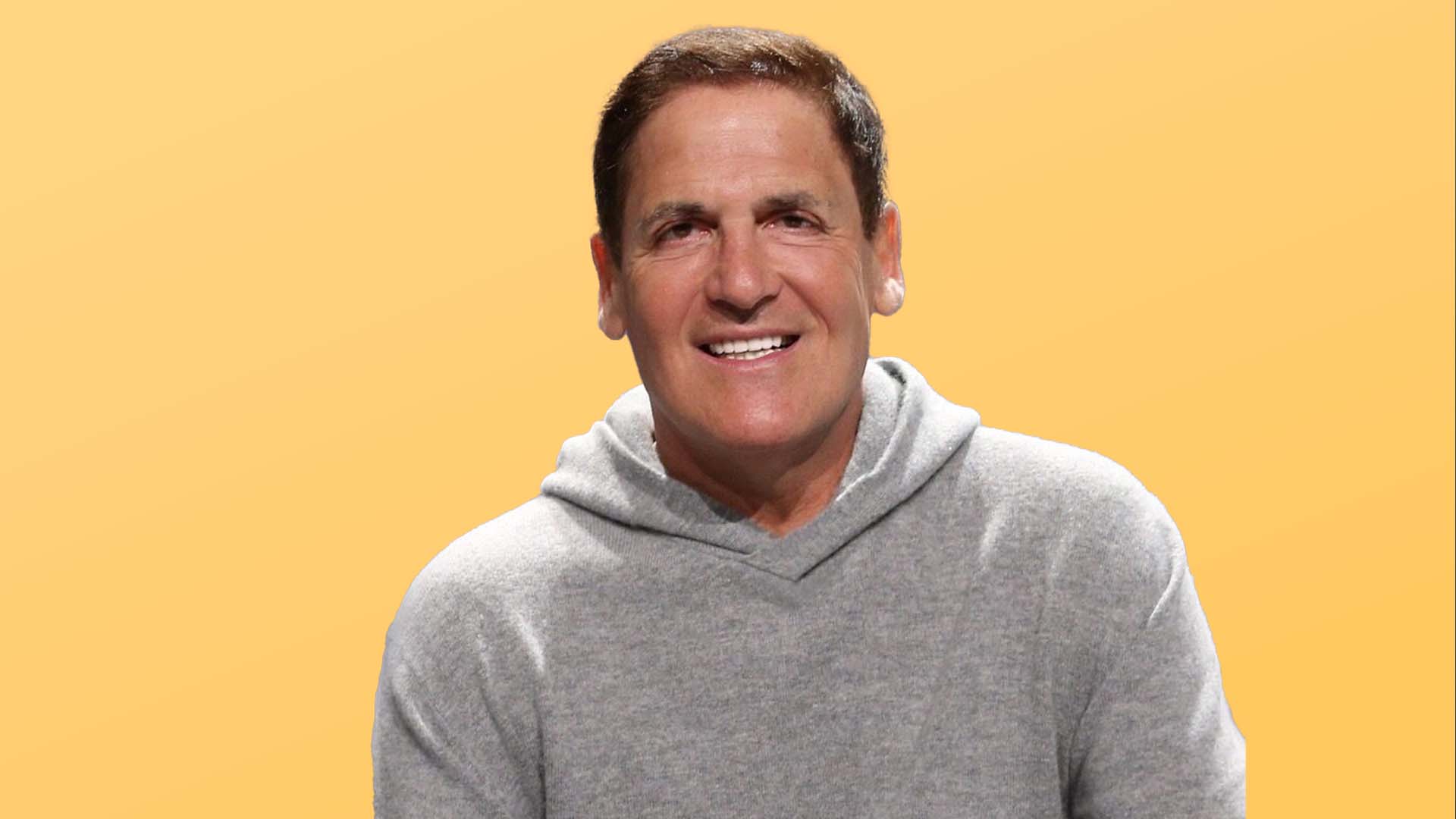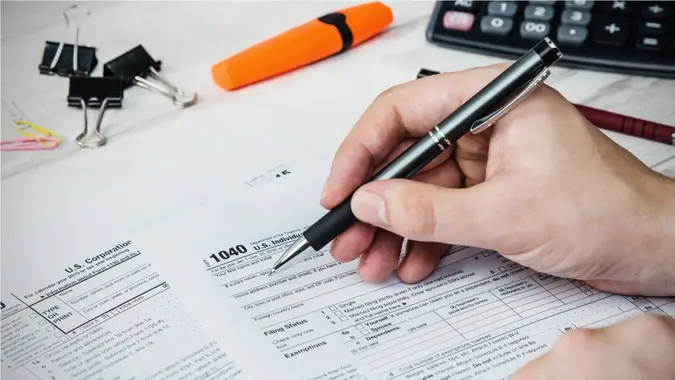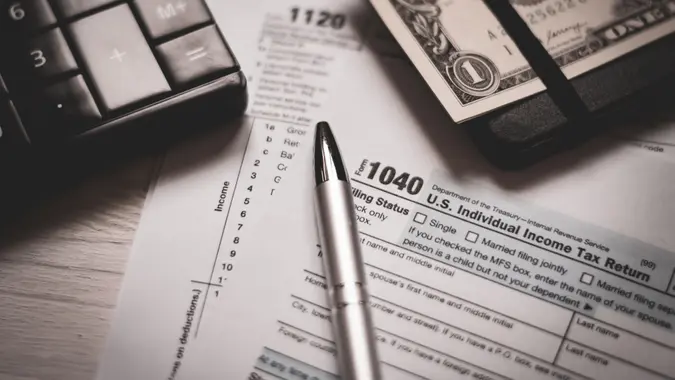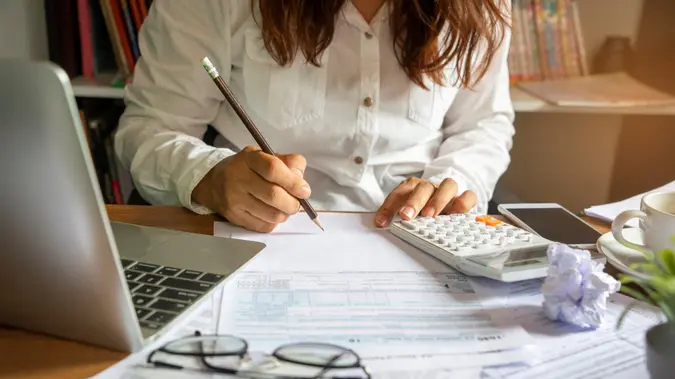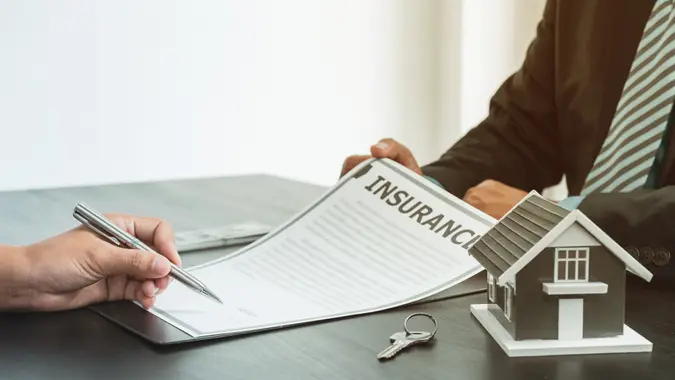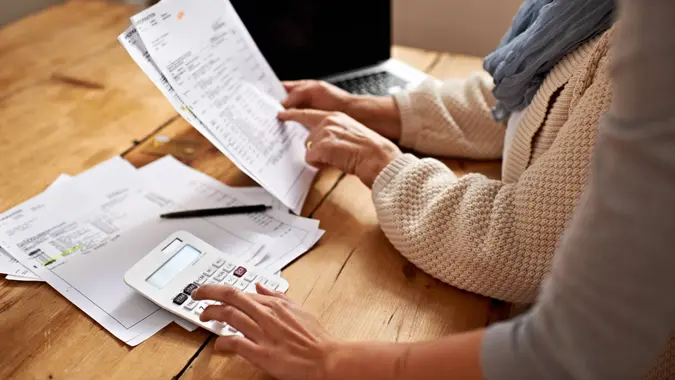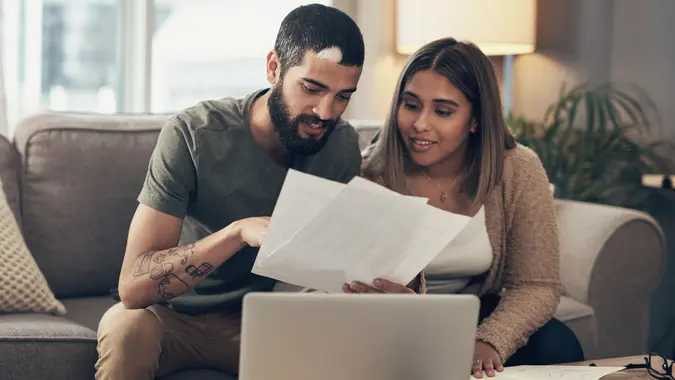5 Smart Ways To Use Your Tax Refund — and 3 Costly Mistakes To Avoid

Commitment to Our Readers
GOBankingRates' editorial team is committed to bringing you unbiased reviews and information. We use data-driven methodologies to evaluate financial products and services - our reviews and ratings are not influenced by advertisers. You can read more about our editorial guidelines and our products and services review methodology.

20 Years
Helping You Live Richer

Reviewed
by Experts

Trusted by
Millions of Readers
Many people dread tax time. But not you. For you, tax season doesn’t open a Lovecraftian portal that sucks money out of your accounts — instead, you find yourself with a refund. Regardless of how many commas and zeros that refund comes with, you’re eager to put it to good use. But what does good use really look like?
As part of our Top 100 Money Experts series, GOBankingRates turned to Eryn Schultz, MBA, CFP, founder of Her Personal Finance and Earn with Eryn, to answer the question: What’s the smartest way to use a tax refund?
According to her, it really depends on your circumstances. While the smartest money move doesn’t involve a luxury vacation to Maui, where you are in your financial plan determines how to make the most of your tax refund.
5 Smart Ways To Use Your Tax Refund
1. Build Your Emergency Cushion
The very first question Schultz wants anyone expecting a refund or any other windfall to ask themselves is simple: “Where am I with my emergency fund?” If that number is under $5,000, your initial move should be putting that money into your emergency fund.
“First, do you have $5,000 in an emergency fund? If you don’t, start there. We all know cash is king, and that first $5,000 will make sure you can pay your bills,” she said.
2. Grab Your 401(k) Match
If your employer offers a retirement match, don’t leave that money on the table. Schultz ranks this as one of the first moves to make once your initial $5,000 emergency fund is in place.
3. Pay Off High-Interest Debt
“I consider 6.5-7% to be the definition of high-interest debt,” Schultz said. “If you have credit card debt at 25% or a car loan at 9% pay that off.”
And she recommends prioritizing debt repayment before investing. “Credit card debt is 20% or more interest. While the stock market has been a great engine of growth, the interest rate is not guaranteed and it’s generally averaged closer to 7% than the 20%+ rates you would owe on a credit card.”
4. Expand Your Safety Net to Three Months’ Expenses
Remember that $5,000 emergency fund? Once you’ve paid down that high-interest debt, Schultz wants you to circle back and fully build out your emergency savings. “Making sure you have a good cash buffer generally comes before investing outside of getting your 401(k) match,” she explained. Aim for three months’ worth of expenses.
5. Invest Strategically for the Future
If you’re debt free (or only carry low-interest debt) and have your savings in place, investing is the next smart choice for your tax refund. Schultz advises starting with your workplace 401(k):
“Not only is your 401(k) set up through work, reducing the burden on you to decide where to invest, but putting money into a pre-tax 401(k) will also save you money on taxes today,” she said.
3 Costly Mistakes To Avoid
Mistake 1: Ignoring Your Emergency Fund
Throwing your tax refund into investments without having at least $5,000 in savings is risky. Without that cushion, a minor emergency can push you into debt.
Mistake 2: Carrying High-Interest Balances
Schultz also warns against letting credit card or car loan debt linger while trying to grow investments. Those interest rates will almost always outpace what you earn in the market.
To illustrate how using your tax refund to pay down debt could work, Schultz offers a fictional example. Irene has $10,000 in debt split between a 25% credit card and a 9% car loan. With a $5,000 refund, Irene could roll her card balance onto a 0% APR card and use the refund to pay off the car loan.
“With the money that she is no longer putting to her car payment and credit card interest each month, she could put $600 a month to the credit card,” Schultz said. “She would pay off the credit card in just over eight months and then start to build up the rest of her emergency fund.”
Mistake 3: Spending It All on Wants, Not Needs
It’s tempting to view your refund as “bonus money” for vacations or splurges. But without a clear plan, that windfall can vanish in a hurry, leaving you no better off than before.
Bottom Line
A tax refund can feel like found money, but how you use it can have a big impact on your financial goals. According to Schultz, the smart order of operations is: build your emergency fund, capture your 401(k) match, pay off high-interest debt, extend your savings, and then invest. Avoiding costly mistakes like skipping savings, carrying debt, or spending frivolously can ensure this found money pushes you closer to your financial goals.
This article is part of GOBankingRates’ Top 100 Money Experts series, where we spotlight expert answers to the biggest financial questions Americans are asking. Have a question of your own? Share it on our hub — and you’ll be entered for a chance to win $500.
 Written by
Written by  Edited by
Edited by  Money Expert
Money Expert 









































































